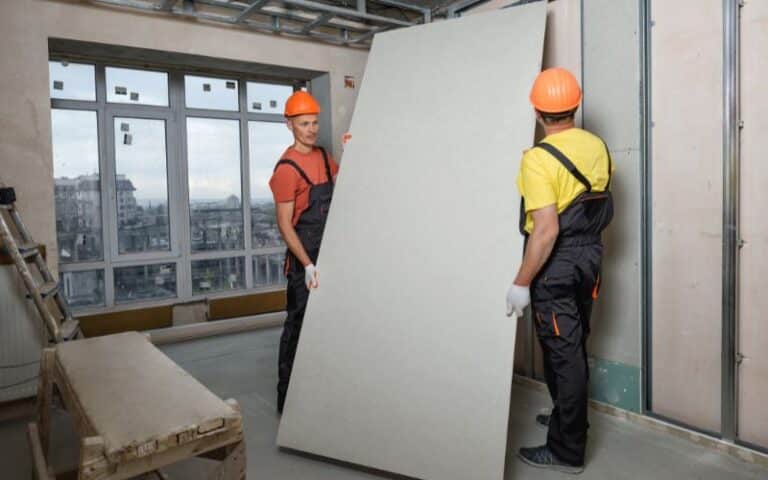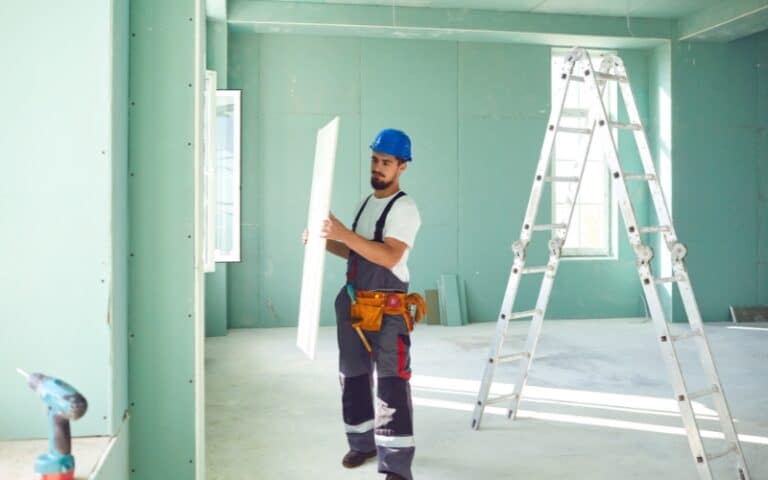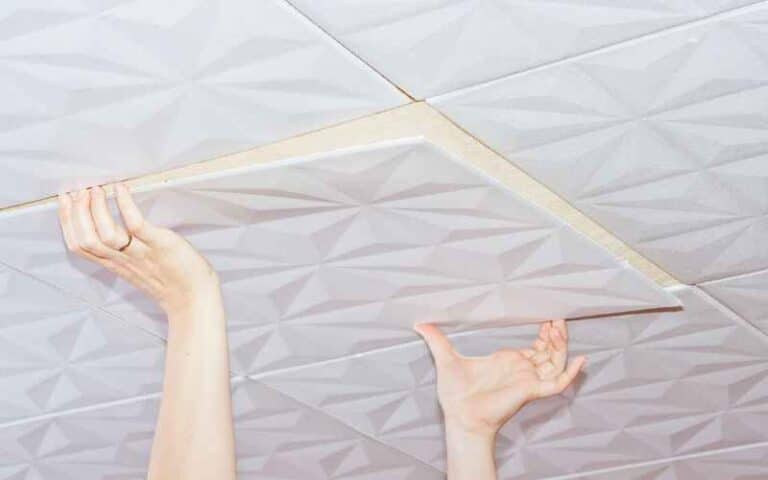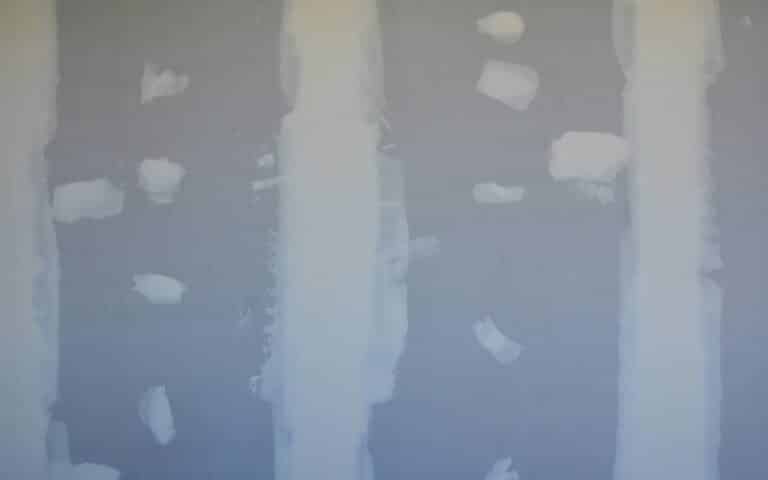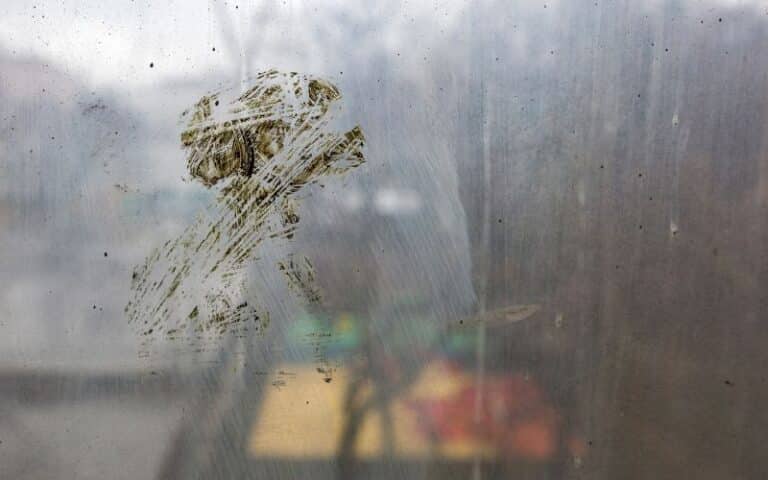When applying drywall on surfaces, you might encounter problems like significant joint gaps. Your drywall joints should be tight enough to prevent your drywall from cracking.
However, the gaps between the joints should not be larger than ⅛ inch. If you notice significant gaps in your drywall joints, is it necessary to prefill them?
Yes, it is necessary to prefill large drywall joints. If you do not prefill the joints, the drywall might end up cracking and eventually falling off. When prefilling large drywall gaps, you should use a setting type of compound or hot mud and tape the gaps immediately afterward.
In this article, I’ll give you information on the materials you’ll need for prefilling and how to prefill large drywall gaps.
Ready for a Drywall Quiz?
How Many Gaps Should You Leave Between Drywall?

There should be about ⅛ gap between your drywall sheets during installation. One common mistake people make during drywall installation is allowing the joints to be too tight.
It is necessary to leave some gap between your drywall sheets because as seasons change, the sheets contract and expand.
If there is no space for the drywall to contract and expand, cracks might form on your drywall, and the drywall might end up breaking apart.
Although there needs to be some gap between drywall joints, ensure that the gap does not exceed ⅛ inch gap.
How to Fix Gaps Between Drywall Joints?
It is necessary to fix the gaps between your drywall joints if it exceeds ⅛ inches.
Here are steps to fix the gap between drywall joints:
- Apply a caulk remover to the gap and leave it for a while. When you return to it, use a plier (preferably one that is needle-nosed) to peel off the caulk.
- Use a utility knife to remove the remnant of the caulk from the gap.
- Use your screw gun to secure loose screws into the gap’s drywall. If you use nails on your drywall, use a hammer to secure it in the drywall.
- Use your utility knife to trim off the stray paper from the edges of your drywall. These papers usually cause bubbles to form on your drywall.
- Apply a stain-blocking primer on the edges of our drywall to prevent the joint compound from spilling through the paint.
- Mix up your hot mud (joint compound) for this next step.
- Use your 6-inch drywall knife to pack the joint compound and draw it across the gap.
- Make sure that the joint compound properly fills up the gap.
- Once you finish spreading the joint compound, blend it out by feathering the edges of your drywall.
- Allow the joint compound to dry and harden over the drywall. Use your drywall knife to scrape off any excess drywall from the edges.
- Use the drywall knife to carry more joint compound and spread it over the patch to blend it.
- Open up your tape, lay it over the patch, and then use a 12-inch drywall trowel to smoothen it.
- Spread the joint compound over the tape with your drywall knife to seal it. Remove any bubbled tape with your utility knife.
- After you finish the taping process, the next step is to sand the edges of the drywall. Again, wear protective gear like a dust mask in eye goggles.
- Use 120-grit sandpaper to sand the edges of the patch.
- Once you sand the edges, you can paint the wall.
How to Prefill Large Drywall Gaps?
Prefilling gaps is necessary as it helps prevent gaps when the joint compound dries.
That said, here is a list of materials you will need for pre-filling drywall gaps:
- Setting type compound or hot mud
- Spray foam
- Utility knife
- 6-inch drywall knife
- Drywall tape
- 120 grit sander
Here are steps to prefill large drywall gaps:
- The first step involves mixing your joint compound. Hot mud is the best type to prefill drywall gaps because you can start taping right after mudding.
- The next step is to spray foam the gap and let it dry.
- When you return to it, use a utility knife to cut out from the drywall edge to ensure it is open enough for the mud.
- Use a 6-inch drywall knife to pick up mud and run it across the gap. Make sure that the mud gets into the gap.
- When you finish filling the gap, spread drywall tape across it and cover the tape with a joint compound.
- After taping the gap, use a 120-grit sander to smoothen the joint compound.
- Apply a coat of primer over the drywall surface and then paint the surface according to the surrounding walls in the room.
How to Mix Hot Mud?
Here are steps to mix hot mud:
- You’ll need to buy buckets, a mud mixing drill, and drywall quick set mud from a brand like CGC lifeline or the USG, plus three for the drywall mud mixing.
- Open the drywall mud from its packaging by unfolding the box and tearing open the plastic bag containing the content.
- Transfer the content carefully by turning it over into a bucket, then dispose of the bag.
- If you purchase drywall mud from a brand like CGC, you will notice the mud is dry.
- The dryness of the mud makes it good enough to use in place of the quick set in case you can’t find one available.
- Pour some water into the bucket of mud and use the mixing drill to break it down for a while.
- Hold the bucket between your legs, and allow the drill to spin at the bottom.
- Pause the drill in between spins as you slowly work your way to the top of the bucket
- Add more water into the bucket and lift the drill to the top to spin. The mud will get smoother as you spin the mud.
- Once the mud is smooth enough, use it to prefill the joint
What Can You Use for Pre-filling Large Drywall Gaps?
You should use a joint compound to prefill large drywall gaps. Hot mud or setting compound is the best joint compound for large drywall gaps.
Here is a table showing the materials you will need for pre-filling large drywall gaps and their functions.
| Materials | Functions |
|---|---|
| Setting type compound or Hot mud | To fill up the gaps in the drywall. |
| Spray foam | For insulating and filling the gaps. |
| Utility knife | To cut open the drywall edges. |
| 6-inch drywall knife | To carry the joint compound and spread it over the drywall gap and edges. |
| Drywall tape | For the taping process of the drywall. |
| 120 grit sander | To sand and smoothen out the drywall edges. |
| Primer | To provide an adhesive layer for the paint. |
When Should You Prefill Drywall Gaps?
It is best to prefill your drywalls before taping. Prefilling drywalls helps to give the joint compound enough time to dry and helps to prevent cracks.
After you prefill your drywall, you can use drywall tapes over the patch and apply more joint compounds over the video.
Applying joint compound over the tape helps ensure that the patch and the tape are secure. Applying the compound also helps to blend out the drywall.
Once the joint compound dries, you should use a 120-grit sander to smoothen out the joint compound you put over the tape. Ensure to blend out the compound thoroughly.
After sanding the drywall, apply primer (preferably a waterproof primer) over the drywall. The primer helps to provide an adhesive layer for the coat of paint you will apply later.
Use a waterproof primer to give the drywall added protection against moisture. Most drywalls usually crumble when exposed to moisture.
When you finish applying enough coats of primer, you can paint the surface to match the color of the surrounding walls.
Should You Fill or Tape Large Gaps on Drywall Edges?
You should fill and tape the large gaps on the drywall edges. Filling out the gaps on your drywall edges helps prevent the drywall’s cracking and eventual falling apart.
Also, leaving the gaps without tapping them makes them unattractive. It is also necessary to tape significant gaps after filling them with joint compounds because the tape helps to strengthen the joint.
The tape also helps to create a bond between the drywall joints. Taping gaps in your drywall also helps to prevent movement of the joint compounds, therefore, preventing cracking.

